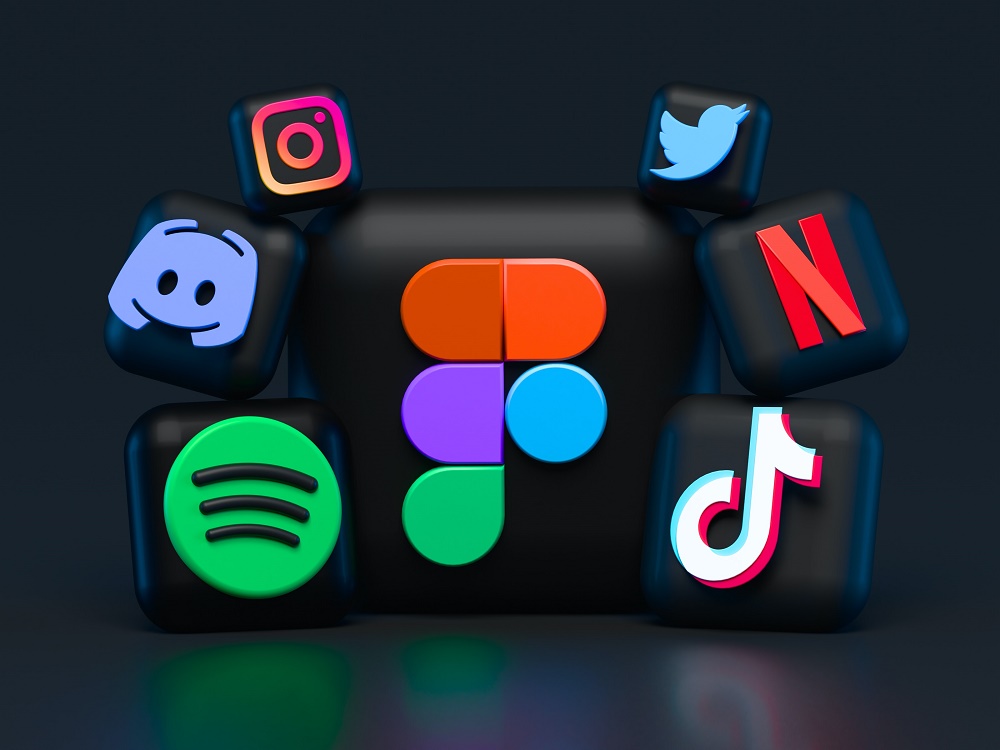Your app’s icon is not just a simple image; it’s your digital identity, your first impression on potential users. Crafting the perfect app icon is a business-critical task that goes beyond aesthetics. Beyond aesthetics, creating the ideal app icon is a crucial responsibility for the company. In this blog, we will get into the importance of app icons, their functions in the app store and on users’ devices, and the best methods for making a contemporary, successful, and useful app icon.
What is an App Icon?
An app icon, often referred to as an app logo, serves as a distinctive visual representation of your mobile application. This icon is a fundamental element of your app’s branding and recognition. It’s not confined solely to the home screen of users’ devices but extends its presence to various areas, including search results, settings, and the app store. This makes the app icon a critical element in conveying your app’s identity and purpose, ensuring that users can easily find, recognize, and engage with your application in a crowded digital landscape.
Why App Icons are Important
App icons are not mere graphic elements; they are powerful tools for branding, user attraction, and communication. Investing time and effort into designing an effective app icon can significantly impact your app’s success, from initial user acquisition to long-term retention. App icons are vital components in mobile app development for several compelling reasons:
- First Impression: App icons are often the initial point of contact between your app and potential users. They appear prominently in app stores and on users’ devices. A visually appealing and memorable icon creates a positive first impression, increasing the likelihood of user engagement.
- Brand Recognition: App icons are essential for brand recognition. A well-designed icon reinforces your brand identity and helps users connect your app with your company or service. Over time, this can lead to increased brand loyalty and trust.
- User Attraction: In the crowded app marketplace, users are presented with numerous choices. An eye-catching app icon can make your app stand out, attracting more users and increasing the chances of organic installs.
- User Retention: An attractive app icon can help maintain current users in addition to drawing in new ones. Their home screens use it as a visual anchor, which makes it simple for them to find and use your program on a daily basis.
- Communication: App icons can convey the purpose or core function of your app. A carefully crafted icon should provide a visual representation of what the app does, aiding users in understanding its functionality even before they open it.
- Aesthetic Appeal: An aesthetically pleasing app icon reflects positively on your app and brand. It can create a sense of professionalism, indicating to users that your app is of high quality and worth their time.
- Differentiation: App icons help differentiate your app from competitors. A unique and distinct icon can set you apart in a crowded marketplace, making users more likely to choose your app over similar alternatives.
- User Engagement: An engaging app icon can pique user curiosity and encourage them to explore your app further. It can serve as a visual teaser, sparking interest and increasing the likelihood of interaction.
- Recognition in the App Store: In the app store, your icon plays a pivotal role in search results, featured pages, charts, and recommendations. It must be memorable and appropriately sized to encourage users to install your app.
- Post-Install Functionality: After installation, the app icon continues to play a vital role in helping users locate and access your app quickly. It should be easy to recognize on the user’s home screen and convey the app’s main purpose.
App Icons in the App Store
Your app icon in the app store is your first chance to draw a customer in and persuade them to install your app. It ought to be proportionate, striking, and unforgettable. A well-designed app icon reinforces your brand’s values and entices users to take that crucial step—installation. However, a poorly designed icon can confuse or deter potential users.
App Icons on Users’ Devices
Post-installation, your app icon takes on a different yet equally crucial role. It’s the visual representation of your app on the user’s home screen, settings, and in their daily searches for new apps. A carefully designed app icon should be more than just visually appealing; it should convey the core function of your app, making it easier for users to remember its purpose.
How To Create A Successful App Icon?
A combination of design concepts, user psychology, and branding considerations is needed to create a good app icon. A well-designed app icon may greatly increase user engagement and recognition. To create an app icon that resonates with customers and leaves a lasting impression, consider the following step-by-step guide:
Understand Your App’s Core Functionality
Be certain about the main objective of your app before creating the symbol. What distinguishes it from others and what problem does it solve? The icon should visually represent this core functionality.
Research Your Competitors
Analyze the app icons of your competitors. Identify common design elements in your app category and look for opportunities to differentiate your icon from the crowd.
Prioritize Recognizability
Your app icon should be instantly recognizable. Use distinctive shapes, colors, or symbols that set it apart. It should be easily distinguishable even when displayed in a small size.
Maintain Consistency with Branding
Ensure that your app icon aligns with your brand’s visual identity, including color schemes, fonts, and design elements. Consistency helps reinforce brand recognition.
Choose Colors Wisely
Colors evoke emotions and convey meaning. Select colors that reflect your brand’s personality and the app’s purpose. Consider color psychology and how different hues might influence user perception.
Incorporate Relevant Imagery
If your app’s functionality can be represented with an image or symbol, consider integrating it into the icon. Keep it simple and easily recognizable.
Focus on Scalability
Your app icon will be displayed in various sizes, so design it with scalability in mind. Ensure it remains clear and appealing when shrunk to a small size.
Test Multiple Variations
Create several icon variations and test them with a focus group or through A/B testing to gather user feedback and data-driven insights. This can help you refine the design.
Avoid Text and Complex Details
Text within the app icon can be challenging to read at smaller sizes, and complex details may not be discernible. Opt for a design that communicates without relying on text or intricate elements.
Follow Platform Guidelines
Each app store has its own guidelines and specifications for app icons. Make sure your icon meets these requirements for size, format, and other technical details.
Consider Adaptability for Dark Mode
If your app supports dark mode, ensure your icon is adaptable to both light and dark backgrounds. Test how it looks in different color schemes.
Seek Professional Designers
If you lack design expertise, consider hiring a professional logo designer agency or a web design agency to create your app icon. They can provide valuable insights and create a polished, effective design.
Iterate and Test
Design is an iterative process. Don’t hesitate to make revisions based on user feedback and performance data. Regularly test different variations to optimize your icon’s impact.
Stay Updated
App design trends evolve. Periodically review and update your app icon to keep it modern and aligned with current design trends.
Legal Considerations
Be aware of copyright and trademark issues when using logos, images, or symbols in your app icon. Ensure that your design does not infringe on the intellectual property of others.
How to A/B Test App Icons for Optimal Results?
A/B testing is a valuable tool to ensure your app icon is delivering the desired results. Once you have settled on the ideal color palette for your app icon, the journey to success continues with iterations and exploration of potential improvements. Here are some key steps to follow:
- Develop Your Hypothesis
Begin by defining what you want to achieve with your app icon. Your hypothesis should outline the expected impact on key performance indicators (KPIs). For example, changing the icon’s color might attract more installs, or adding a symbol related to your app’s function could appeal to high-value users.
- Create Design Variants
Create distinct variants of your app icon. Keep changes minimal to avoid complicating the test with too many variables.
- Form Audience Groups
Construct two audience groups that exhibit similar behavior to eliminate behavioral variables. This is essential to derive accurate test results.
- Run A/B Test Campaigns
Execute your A/B tests, focusing on paid campaigns or App Store Optimization (ASO) changes. Define a timeframe for the test to gather sufficient data without prolonging it unnecessarily.
- Analysis
Examine your A/B test findings, comparing the impact of the modified version on your KPIs and ensuring that the results are in line with your business objectives.
Conclusion
Creating an effective app icon is not just about aesthetics; it’s a multifaceted process that can significantly impact your app’s success. Whether you’re striving for recognition in the app store or aiming for lasting impressions on users’ devices, a well-designed icon is a critical asset. Coupled with A/B testing, you can refine your app icon to maximize its potential to drive installs and user engagement. In the competitive world of mobile app development, an iconic app icon sets the stage for your success.





